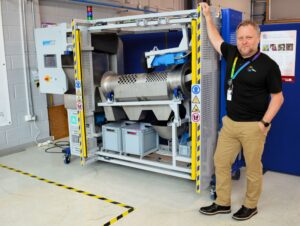A Step-by-Step Guide to Gathering Meaningful Feedback from Students

People raising hands to ask questions at business training on light background, closeup
As an educator, it’s important to know how your students are doing, what they understand and what they don’t, and how to help them learn better and get more from their classes. One of the best ways to get answers to these questions is to gather feedback from students. Getting feedback can help educators improve their teaching, better tailor lessons to students’ needs, and help students learn more effectively. In this post, we’ll explore a comprehensive step-by-step guide to gathering meaningful feedback from students.
Define Your Objectives
Before you begin collecting feedback from your students, it’s crucial to know what you want to achieve. Defining your objectives will help you choose the most appropriate methods for collecting feedback and ensure that you get the information you need to improve your teaching. Ask yourself, what is that you want to know from your students? Is it regarding a certain lesson, assignment, or project? Or do you want to gather feedback on your classroom management skills or teaching style? Once you have a clear idea of what you want to use the feedback to achieve, you can move on to the next step.
Choose Your Methods
There are various methods that you can use to gather feedback from students, ranging from informal conversations about their experiences to formal surveys, live word polls, and focus groups. The methods that you choose will depend on your objectives, the age and stage of your students, and the time and resources that you have available. Some of the most common methods of gathering feedback from students include:
- Informal conversations: These are one-to-one or small group discussions with students aimed at getting their opinions and feedback. Informal conversations are often the most effective method of gathering feedback, particularly if you’re working with younger students. They can take place during the class, during break time, or after school.
- Focus groups: Focus groups work in a similar way to informal conversations, but they involve a larger group of students. This method can be especially useful for gathering feedback on a certain topic, such as an assignment or project.
- Written feedback: Written feedback can take the form of quick quizzes, surveys, or exit tickets, to name a few. This can be a very useful way to gather feedback on certain topics or get more comprehensive feedback on your classroom management or teaching style.
- Online surveys: Online surveys are becoming more and more popular as a method to gather feedback from students. They can be quick and easy to create, distribute and collect, making them a very convenient option for busy teachers.
- Live word polls: Using an app like the Vevox app, you can share a poll with your students and ask them to give a one-word or short phrase answer. In Vevox, the most common answers will then be displayed in a word cloud, where the most common answers are shown in a larger font, allowing you to instantly see the most common issues or concerns. Vevox can be used in both a traditional classroom and remote learning setting.
Prepare Your Questions
Once you have chosen the methods of gathering feedback that you plan to use, it’s time to prepare your questions. The specific questions that you ask will largely depend on your goals and objectives, but there are some general guidelines to follow. First of all, be sure to keep your questions focused and specific. Avoid asking questions that are too vague or general, or don’t provide any useful information. Questions are best kept open-ended, as this gives students the chance to express their opinions and ideas freely. Try to avoid asking any leading questions that might influence the responses that students give. Some example questions that you might find helpful include:
- What did you like about this lesson/assignment/project?
- What did you find challenging about the lesson/assignment/project?
- How can I improve my teaching/lessons/projects/assignments?
- What would you like to learn more about in this class or subject?
Collect the Feedback
The next step along is to collect the feedback. Depending on the methods you have chosen, this might involve talking to students one-to-one, distributing written feedback forms or surveys, giving students a live poll, or setting up an online survey that students could fill out.
- Some tips to keep in mind when it comes to collecting feedback from students effectively include:
- Choose a time that suits your students and does not disrupt their learning.
- Make sure that students understand the purpose of the feedback and know that their opinions are valued.
- Ensure that feedback is anonymous, if necessary, to encourage students to give honest and open responses.
- Explain how their feedback is going to be used in the future to improve teaching and learning.
Analyse and Act on the Feedback
Once you have collected the feedback, it’s time to analyse and act on it. This is the most important step because it’s where you’ll use the feedback to improve your teaching, improve the environment for students, and help your students learn better. Some things to keep in mind when it comes to analysing and acting on feedback effectively are as follows:
- Look for patterns: Look for any common themes or issues that emerge from the student feedback. This will make it easier for you to identify any areas where you can make improvements.
- Prioritise: Identify the most important areas for improvement and prioritise them. This will help you focus your efforts and make the most significant impact.
- Make a plan: Once you have identified the most important areas for improvement, come up with a plan for how you are going to address them. For example, this might involve adjusting your lesson plans, changing your teaching approach, or providing students with additional support.
- Communicate: Make sure to communicate your findings and your plans for improvement to your students. This will ensure that they understand that their feedback is valuable to you, and that you are committed to making changes based on their input.
- Evaluate: Finally, evaluate the impact of your changes. Have they had the desired effect? Were you able to fully address the issues identified in the feedback? If not, are there any further changes you could make?
Continue Gathering Feedback
It’s important to note that gathering feedback from your students is not a one-time event, but an ongoing process. Setting aside time to ask for and get feedback from students on a regular basis can help you stay on top of your teaching game and ensure that the needs of your students are met. It can also help you build a culture of open communication and trust in the classroom, leading to a more positive learning environment.
It’s important to be open to criticism when gathering feedback from students. While hearing negative feedback is not always easy, it’s essential to remember that it’s an opportunity to learn and improve your teaching. When you are open to criticism, you demonstrate to your students that their opinions and ideas are valued, which can encourage them to be more forthcoming with feedback in the future.
Gathering feedback from your students is a crucial tool for improving teaching and helping students learn more effectively. By following the steps in the guide, you can gather meaningful feedback to help you make better classroom decisions.




